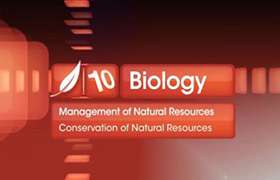CBSE Class 10 Answered
Please tell
Asked by | 13 Dec, 2008, 01:03: AM
Coliform bacteria are the commonly-used bacterial indicator of sanitary quality of foods and water. They are defined as rod-shaped Gram-negative non-spore forming organisms that ferment lactose with the production of acid and gas when incubated at 35-37C.
Coliforms are abundant in the feces of warm-blooded animals, but can also be found in the aquatic environment, in soil and on vegetation.
In most instances, coliforms themselves are not the cause of sickness, but they are easy to culture and their presence is used to indicate that other pathogenic organisms of fecal origin may be present.
Answered by | 13 Dec, 2008, 12:45: PM
Application Videos
Concept Videos
CBSE 10 - Biology
Asked by kanikathakur1476 | 26 Mar, 2021, 08:29: PM
CBSE 10 - Biology
Asked by sangeet | 10 Sep, 2020, 06:58: PM
CBSE 10 - Biology
Asked by manyavalecha30 | 19 Apr, 2020, 06:01: PM
CBSE 10 - Biology
Asked by sleepingdox | 29 Mar, 2020, 11:58: AM
CBSE 10 - Biology
Asked by officialmehak26 | 06 Feb, 2020, 09:12: PM
CBSE 10 - Biology
Asked by subbukum | 04 Feb, 2020, 10:22: AM
CBSE 10 - Biology
Asked by sukumarpatra3968 | 26 Nov, 2019, 06:58: PM
CBSE 10 - Biology
Asked by poonampandit087 | 09 Nov, 2019, 07:58: AM
CBSE 10 - Biology
Asked by vedantsagrawal23 | 18 Aug, 2019, 01:39: PM
CBSE 10 - Biology
Asked by minjingchemshy | 17 May, 2019, 11:18: AM












